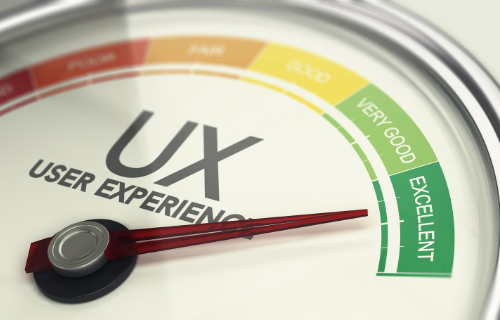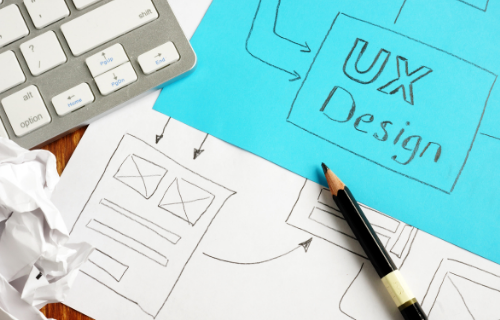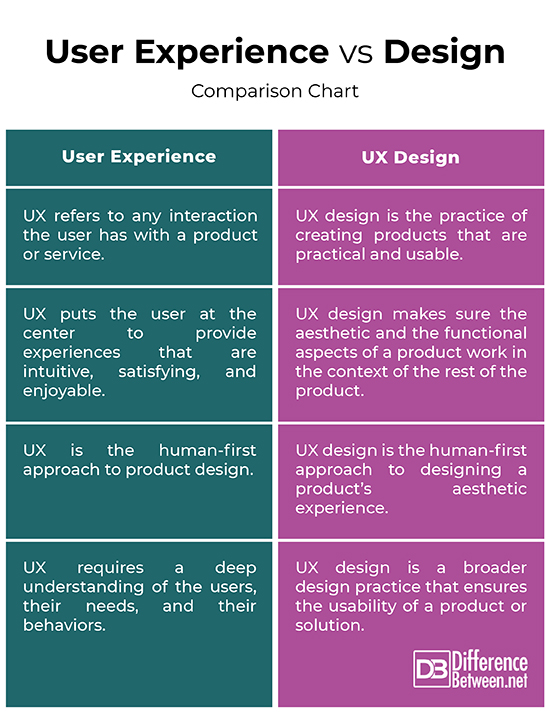Difference Between User Experience and Design
There’s a lot that goes into the process when a product is being developed. People pay a great deal of attention to what it does. User experience is the other side of the equation that often makes the difference between a successful product and a failed one. Everything that goes wrong when you interact with a product demonstrated a lack of attention to the user experience. So that begs the question – what exactly is user experience? And how is it any different than user experience design?

What is a User Experience?
User experience (UX) is the experience a product creates for the people (or users) who use it in the real world. It refers to any interaction the user has with a product or service. UX is not about what goes inside of a product or service or how it works on the inside; UX is about how it works in the real world, when a user comes into contact with it. When someone asks you about how you like this particular product or service, they refer to the user experience. How it performs? Is it easy to use? How does it feel to use the product?
UX is the design practice that focuses on creating experiences, typically digital experiences like websites, for examples, that are easy to use and relevant to the users. UX puts the user at the center of all considerations, so that the final experience provides interactions that are intuitive, satisfying, helpful, and even enjoyable. UX mostly refers to a user’s interaction with the digital world like a digital product.
For example, when using a mobile app, let’s say an ecommerce app, the UX may refer to the usability of the app, like how easy it is to use the app, how is the buying experience – long, complex, or easy, how simple is the checkout process, everything that makes your experience hassle free.

What is UX Design ?
UX is always followed by this word “design.” From a business standpoint, UX defines how a brand or business is experienced by customers through digital media. When most people think about product design, they often see the aesthetic side of the product, like how it looks to the eye and feels to the touch. But, a successful product is the one that does exactly what it promises to do. UX design is the practice of creating products that are both practical and usable. UX design integrates a number of components and these components help users better understand what makes up UX. It includes all the aspects of a product’s development, including product design, its usability, information architecture, content strategy, and even marketing.
Difference between UX and Design
Meaning
– User experience (UX) is the experience a product creates for the people (or users) who use it in the real world. It refers to any interaction the user has with a product or service. UX refers to the quality of the user’s interaction with a product or service. UX design, as the name suggests, is the creation and synchronization of the elements that affect user’s experience with a particular product, with the intent of influencing their perceptions. UX design focuses on enhancing user experience and satisfaction with a product.
Objective
– User experience is vital to all kinds of products and services. UX focuses on creating experiences, typically digital experiences like websites and mobile apps, which are easy to use and satisfying for users. The objective is to put the user at the center of all considerations in order to provide experiences that are intuitive, satisfying, and enjoyable. UX design makes sure the aesthetic and the functional aspects of a product work in the context of the rest of the product.
Components
– A good UX has three fundamental components that are widely known throughout the UX digital design industry. The components of user experience are usefulness, usability, desirability, accessibility, credibility, and value. If the user experience is not all these things, it is likely that the user will find other ways to purchase similar product from another sources. The UX design is a multidisciplinary practice that integrates a number of components, including information architecture, content strategy, interaction design, and usability.
User Experience vs. Design: Comparison Chart

Summary
UX is focused on broader objectives, such as usefulness, desirability, and overall engagement. UX is all about creating better experiences for the users; good UX ensures that customers use and actually enjoy the experiences the UX designer’s design. Although UX can apply to many different types of products and designs, the scope of this article is to focus primarily on digital interfaces. UX includes the things that users can interact with in ways beyond the physical, such as websites, software, and mobile applications, and of course, people.
Is user Experience a design?
UX refers to user experience in terms of usefulness, desirability, and overall engagement. UX design is the practice of creating products that are both practical and usable.
Is experience design the same as UX?
UX design is the design practice that focuses on designing a system that offers a great experience to its users. UX design is about interaction between real users and everyday products and services.
Which is better UX or graphic design?
Graphic design focuses only on the visual elements whereas UX focuses on broader objectives and ensures that customers use and actually enjoy the experiences the UX designers design.
What pays more UX or UI?
According to Glassdoor, the average base salary of a UX designer is $90,697 annually while that of a UI designer is $80,450 annually. So, UX pays more.
Does UX design require coding?
UX designers are developers often work together on a single process. While it may not be required to learn coding, there are many instances when coding skills might be helpful for your UX career.
- Difference Between Caucus and Primary - June 18, 2024
- Difference Between PPO and POS - May 30, 2024
- Difference Between RFID and NFC - May 28, 2024
Search DifferenceBetween.net :
Leave a Response
References :
[0]Garrett, Jesse James. The Elements of User Experience: User-Centered Design for the Web and Beyond. London, United Kingdom: Pearson, 2010. Print
[1]Unger, Russ and Carolyn Chandler. A Project Guide to UX Design: For User Experience Designers in the Field Or in the Making. California, United States: New Riders, 2012. Print
[2]Nichols, Kevin P. and Donald Chesnut. UX for Dummies. New Jersey, United States: John Wiley & Sons, 2014. Print
[3]Image credit: https://www.canva.com/photos/MADX_6M7YfA-ux-design-and-web-site-concept-written-on-a-page-/
[4]Image credit: https://www.canva.com/photos/MADRmviIoHs-web-design-and-marketing-concept-measuring-ux-user-experience/
